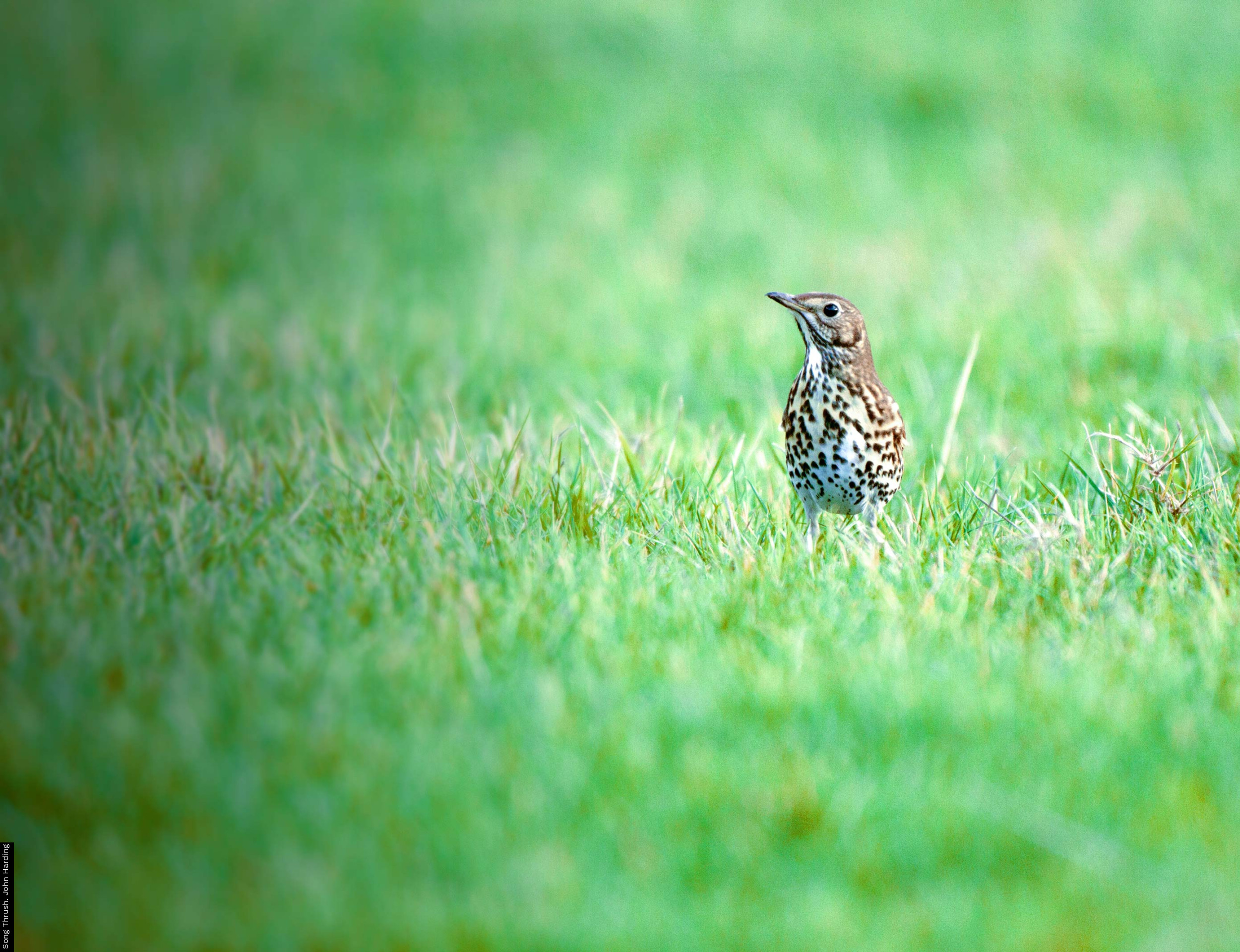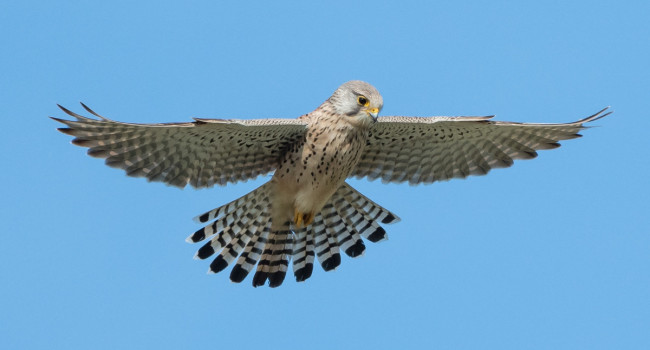Completing the Site Registration Form
The Site Registration Form allows you to tell us about your garden and the land that surrounds it. This form should be completed when you first start your Garden BirdWatch recording. You may need to complete a new Site Registration Form if you make major changes to your garden. If you make a mistake that cannot be corrected easily, or if you have a query, you can write a note in the section for comments and additional information at the bottom of the form, giving the relevant question number and the details.
Section A: Your Garden
Question 1
Enter your Garden BirdWatch Number here. Do not write the actual numbers, but fill in the correct boxes.
Question 2
Small refers to gardens less than 100 square metres (120 square yards) or about half a tennis court in size. Medium refers to gardens between 100 and 450 square metres (120-540 square yards). Large refers to gardens more than 450 square metres (540 square yards) or larger than 2 tennis courts.
Question 3
Please assume that your garden is the same age as your house unless you definitely know otherwise.
Question 4
Small trees are trees and shrubs up to 5 metres (16 feet) tall. Large trees are trees and shrubs more than 5 metres (16 feet) tall. Please count all evergreens as “coniferous”. We are interested in whether your garden provides winter cover.
Question 5
Consider the features listed and judge as best you can what percentage of your garden each occupies. We appreciate it can be difficult to categorise garden features. Drawing a plan may help (but there’s no need to send it to us.)
Flowerbeds - cultivated areas of flowers/ornamental shrubs, 1 metre (3 feet) or less in height.
Shrubberies - areas dominated by bushes/trees more than 1m (3 feet) tall, including internal hedges.
Vegetables - areas cultivated for vegetables and fruit (not orchards), which are accessible to birds.
Wild areas are those which are untended and have become overgrown naturally.
Barren areas are areas such as concrete patios, paths, buildings etc.
Orchard refers to blocks of more than 10 fruit trees.
Question 6
Do not include hedges, walls or fences which are entirely within your own garden, these are logged under Q.5. Low hedge refers to hedges less than 2 metres (7 feet) high. High hedge refers to hedges more than 2 metres (7 feet) high. Evergrn. means evergreen i.e. retaining leaves year-round and decid. means deciduous i.e. bare in winter.
Question 7
The approximate height above sea level in metres can be obtained from the contour lines on an Ordnance Survey map.
Question 8
Berries includes all berries or fleshy fruits eaten by birds, including plums, apples, Yew etc.
Question 9
Please consider how the general abundance of fleshy fruits attractive to birds in your garden compares with the gardens immediately around you and hence judge whether you have more, the same number, or fewer “berries”.
Section B: Around your garden
Question 11
Please indicate the approximate distance of your garden from the sea in kilometres. This information can be obtained from maps and road atlases. (5 km is 3 miles, 10 km is 6 miles and 50 km is 31 miles.)
Question 12
Urban means densely built-up areas and town centres with very few natural or near-natural bird feeding sites. Suburban means inhabited areas near countryside or with large gardens, municipal parks or recreational areas. Rural refers to areas away from towns, with just a few scattered houses, farms or other isolated buildings.
Question 13
Woodland refers to blocks of more than about 10 trees, 5 metres (16 feet) tall.
Mixed woodland contains at least a 10% mixture of broadleaved trees in a coniferous woodland or vice versa.
Scrubland refers to vegetation dominated by woody shrubs and/or trees less than 5 metres (16 feet) tall (this includes young plantations of trees).
Dry semi-natural grassland refers to areas dominated by grasses not apparently managed intensively for farming with probably no herbicides and probably no, or very low, direct fertiliser inputs. These are open areas not greatly enclosed by hedges, walls etc. This category includes such habitats as unenclosed grass moor and chalk downland.
Marsh refers to wet plant communities dominated by rushes (Juncus), sedges (Carex) or reeds (Phragmites) etc, not apparently managed intensively for farming (i.e. probably no herbicides and no, or very low, direct fertiliser inputs). It includes water- meadows, saltmarsh and reedbeds.
Moor/Heathland refers to areas dominated by heather (Calluna) and heaths (Erica).
Bog consists of waterlogged peaty areas often covered with spongy moss (Sphagnum).
Ploughed farmland and Farmed grassland refer to areas of fields enclosed by walls, fences, hedges etc.
Farmed grassland includes both traditional enclosed grazing meadow and “improved” grassland.
Orchard refers to a block of more than 10 fruit trees.
Parks/Recreation areas include public areas with regularly mown lawns (e.g. playing fields, golf courses etc).
Small water body refers to areas of freshwater up to 450 square metres (540 square yards or 2 tennis courts).
Large water body refers to areas of freshwater greater than 450 square metres (540 square yards or 2 tennis courts).
Stream refers to freshwater streams less than 3 metres (10 feet) wide.
River refers to flowing freshwater more than 3 metres (10 feet) wide.
Canal refers to canals over 2 metres (7 feet) wide.
Seashore includes estuarine areas and brackish lagoons, as well as open coast.
NB. If you feel it is not practical or convenient to observe your entire garden, it is quite acceptable to define a small part of the garden as your study area, and record details of just this reduced area on the Site Registration Form. Sometimes it is hard to decide whether birds are in the defined study area or not. Use your best judgement. The criterion for inclusion is that the birds are actually using the study area defined on your Site Registration Form as any kind of resource.






Share this page